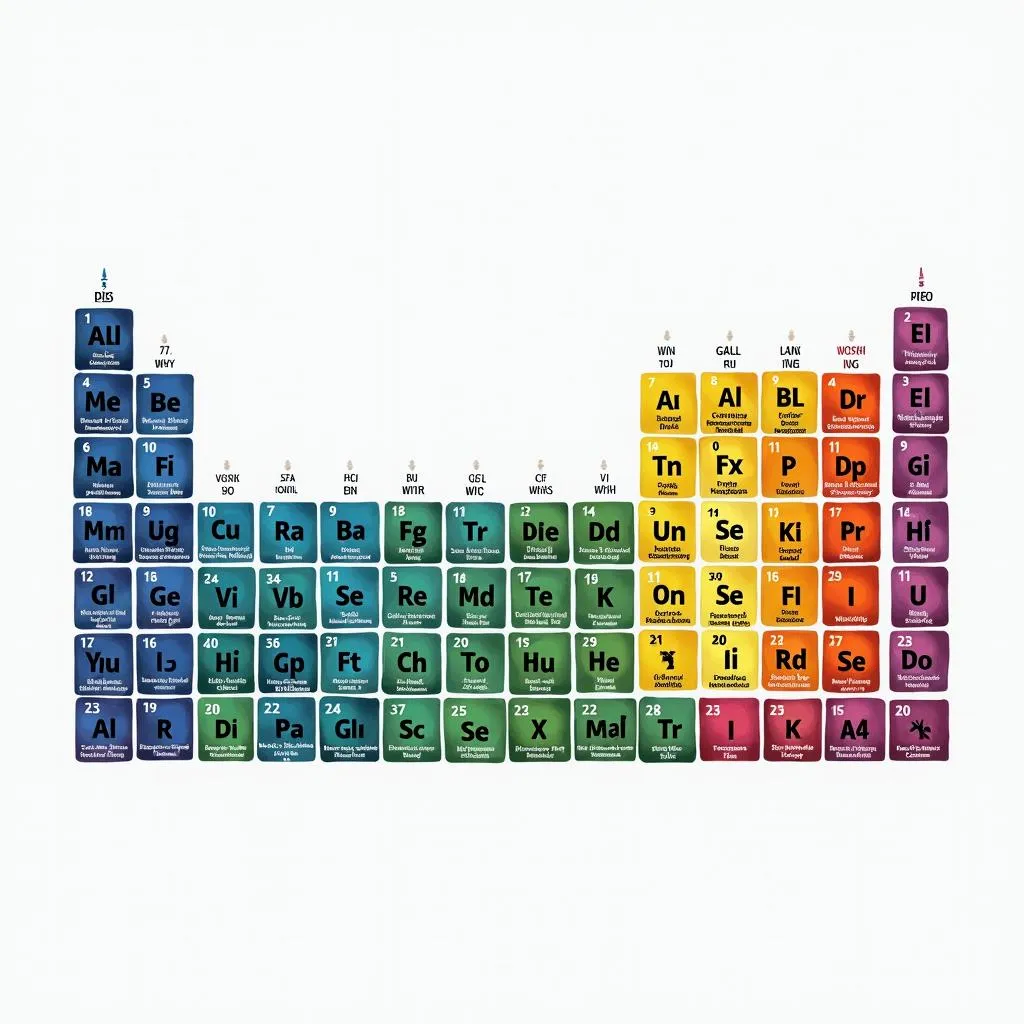The periodic table of elements: a cornerstone of chemistry and a visual feast of information. But have you ever looked at it and thought, “This could use some color?” You’re not alone! Coloring the periodic table can be a fun and effective way to enhance understanding and make those elements stick in your mind. Whether you’re a student, a teacher, or just a curious mind, this guide will equip you with creative approaches and practical tips to color the periodic table like a pro. Let’s dive in!
Understanding the Basics
Before you unleash your inner artist, it’s crucial to understand the “why” behind the colors.
Why Color the Periodic Table?
Color-coding adds a visual layer to the table, transforming it from a grid of letters and numbers into a vibrant map of chemical behavior. Here’s how:
- Visual Association: Colors make it easier to remember and recall information. Associating elements with specific colors strengthens your memory and helps you quickly identify them.
- Highlighting Trends: Color can highlight trends in properties across periods (rows) and groups (columns). For example, you might use a gradient to represent increasing electronegativity.
- Classifying Elements: Different colors can represent different categories of elements, such as metals, nonmetals, and metalloids. This visual separation makes it easier to grasp the organization of the periodic table.
Choosing Your Colors
When selecting your color palette, consider the following:
- Purpose: What do you want to highlight? Are you focusing on groups, trends, or specific properties?
- Contrast: Choose colors that provide good contrast, especially for adjacent categories. This ensures visual clarity.
- Accessibility: Be mindful of color blindness and use color combinations that are accessible to all.
 Coloring the Periodic Table by Groups
Coloring the Periodic Table by Groups
Popular Color-Coding Methods
Let’s explore some popular methods for coloring the periodic table:
1. Coloring by Element Groups
This method involves assigning a unique color to each of the 18 element groups. This approach visually reinforces the idea that elements within the same group share similar chemical properties due to having the same number of valence electrons.
Example:
- Alkali Metals (Group 1): Light Blue
- Alkaline Earth Metals (Group 2): Dark Blue
- Transition Metals (Groups 3-12): Various shades of Grey
- Halogens (Group 17): Yellow
- Noble Gases (Group 18): Pink
2. Coloring by Element Blocks
The periodic table is also divided into blocks (s, p, d, and f) based on the electron configuration of their outermost electrons. This method helps to visualize how electrons fill orbitals.
Example:
- s-block: Orange
- p-block: Green
- d-block: Blue
- f-block: Purple
3. Coloring by Properties
This method involves using a color gradient or distinct colors to represent trends in a specific property across the periodic table.
Examples:
- Electronegativity: Use a gradient from red (highest electronegativity) to blue (lowest electronegativity).
- Atomic Radius: Use a gradient from blue (largest atomic radius) to red (smallest atomic radius).
- Ionization Energy: Use a gradient from purple (highest ionization energy) to yellow (lowest ionization energy).
 Periodic Table with Electronegativity Gradient
Periodic Table with Electronegativity Gradient
Tips for Effective Color-Coding
- Start Simple: If you’re new to this, begin with a basic method like coloring by groups.
- Use a Legend: Always include a clear legend explaining what each color represents.
- Experiment: Don’t be afraid to try different color combinations and methods to find what works best for you.
- Digital Tools: Explore online periodic table resources and software that allow for interactive coloring and customization.
Conclusion
Coloring the periodic table is more than just a fun activity; it’s a powerful tool for understanding and remembering the elements and their properties. By adding a visual dimension to this fundamental tool of chemistry, you can unlock a deeper understanding of the building blocks of matter. So, grab your coloring tools and embark on a colorful journey through the fascinating world of the elements!
FAQs
1. Can I use crayons to color the periodic table?
Absolutely! Crayons, colored pencils, markers – any coloring tool you prefer will work!
2. Is there a “right” way to color the periodic table?
No, the best method depends on your learning style and what you want to emphasize. Experiment and find what works best for you.
3. Can I create my own color-coding system?
Of course! You can develop your own system based on properties, historical periods, or any other criteria you find relevant.
4. Are there any online tools for coloring the periodic table?
Yes, many websites and apps offer interactive periodic tables that you can color-code digitally.
5. Where can I find a blank periodic table to color?
You can easily find printable blank periodic tables online with a quick search.
Need Help With Your Next Project?
Let Color Box Hanoi be your guide to a world of color! Contact us at 0373298888, email us at [email protected], or visit our showroom at 86 Cau Giay, Hanoi. Our team is available 24/7 to assist you with expert advice and personalized solutions.

